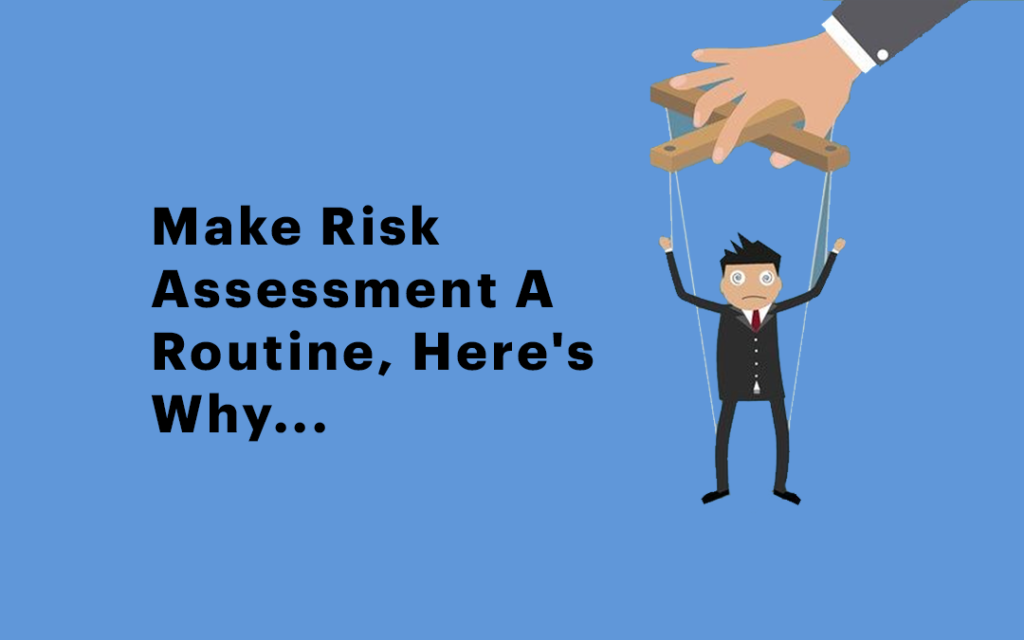It’s certainly no secret that risk assessments and Safe Work Method Statements should be a daily process.
But we can easily build up a love-hate relationship with risk assessments.
Now I want to speak about something that is still a little raw for me (and my broken leg/ankle).
The importance of continually doing risk assessments/and to take five before starting anything.
Risk assessments and Safe Work Method Statements should be a daily process.
Not because you have to by law- but because it’s a natural everyday process.
I have said before, “You cannot un-fall when you fall off a ladder, you just have to hold on until you hit the ground” so prevent the fall in the first place by always assessing the risks.
Well, that’s what I preached, until 25th September 2019.
…When I was preoccupied and not thinking about safety. I was totally focused on the end game, a bit like talking on your phone while driving.
Your mind is totally focused in the wrong place.
I grabbed a ladder, placed it against the wall to climb up 2.4 m high.
Picture this: polished concrete with some sawdust across it, with the top of the ladder placed against a melamine wall.
Without thinking, I climbed the ladder in view and totally focused on the end game, measuring the area for a photocopier.
Standing around 1.6m above ground, the ladder slipped down the wall.
Everything happened so quickly. I had no time to hold on to anything.
I was falling fast… and apparently, at my age, there was no bouncing back up when I landed on impact.
I fell straight onto my right foot. Which took all my weight and momentum from the drop and fractured my tibia at the ankle joint.
The orthopedic surgeon described putting my ankle back together like pieces of a jigsaw puzzle.
Now, six titanium screws later and a moon boot and crutches for 8-10 weeks, it has given me a reality check.
It forced me to slow down and work on the business rather than in the business.
With these six weeks (so far) of bed rest, I’ve finally had some time to write. So I want to share with you how to prevent the same thing from happening to you.
The first realisation is that the injury could have been far more serious than a fracture.
But there will still be a long healing process, with the potential of arthritis in the future. Not to mention the loss of work and the medical costs etc. I have undergone.
We are all faced with potential hazards in many forms, whether it be walking down the street – or travelling overseas. Or even eating or drinking something harmful.
It is not just about risk assessing in the workplace, it is about making risk assessment a habit.
So stop, think and reassess and assess for any risks before proceeding.
Now, a message to those who are self-employed.
As self-employed workers, we tend to have our minds in so many areas and not always necessarily focused on the task at hand.
In my case, this time I did not get away from having the accident.
I have been self-employed for over 38 years, and since the first day as the director of my own company, I took out income protection insurance.
This is in lieu of Work Cover.
The only issue with income protection insurance is that the cover or payout does not commence until 4 weeks into the period. That means you’ll have a waiting period of four weeks without pay.
Then, income protection only covers 80% of your total declared salary.
But the funds still assist in reducing some of the financial strain.
I am very fortunate to have a great team, who were able to reorganize and manage the business in my absence. In fact, in many ways even better than if I were there, onsite.
I had to cancel a trip to Darwin for training, delay it and send another trainer to complete the work. This was all arranged by my team, while I was in recovery mode. I trusted my team to make the changes and get it right.
The important thing about being self-employed is to have a contingency plan should something happen to you.

Ask yourself:
Who can replace you?
Can the business run without you?
Do you have income and funds to cover your wages and or someone else to do your work while you’re recovering?
Now if you’re a one-man show, then you need to consider how will you survive if you can’t do the work?
If you are injured or become sick for any period, how will you earn an income? Where will your income come from and what will happen to your work?
Prevention is part of the solution.
Make risk assessments a habit.
For team members
The PCBU, officers, and workers all have a responsibility to maintain a safe work environment.
The person conducting the business unit is responsible for the safety of their workers, contractors and clients or customers in their premises or worksites.
Part of the responsibility is to continually assess risks or potential hazards that could cause harm.
If you feel that you need to brush up on your individual, or company’s risk assessment skills, this is something we can help you with. Heck, I should probably sit in on the course too.
We have a subject that covers risk assessment specifically:
Carry out work-based risk assessments.
This unit is a Certificate IV unit and takes approximately one day to complete.
We supply a template for a Job Safety Analysis and Safe Work Method Statements. And it makes it easy to fill in the template.
We first identify the types of hazards.
- Physical hazards result from exposure to such things as pressure, temperature, noise, bright light, and repetitive movement.
- Chemical hazards are materials or substances that are toxic, flammable or explosive such as petrol, paints and cleaning products.
- Economic hazards are situations that could result in costs for remedial work or even exposure to litigation.
- Biological hazards such as blood, excrement and unclean food are produced by people, animals, and plants.
- Psychological hazards such as time constraints, fatigue, bullying and personal clashes can result in anger, violence, and self-harm.
In my case, the type of hazard was – 1. Physical hazards.
I will jump to the solution or the control measure on how we can either eliminate the hazard or prevent the harm.
Here’s what I should have done:
- Eliminate the ladder and use the mobile scaffolding to gain access to the upper level
- Or install ladder access that is restrained
- Don’t climb the ladder
- Secure a suitable ladder and use three points of contact when climbing.
In all cases, before attempting to do anything:
STOP and think first.
Assess the situation, as it is too late when the ladder slips.
Make risk assessment a habit.
If you would like to know more about how to Carry out work-based risk assessments contact us at
CPCPCM4011A Carry out work-based risk control processes $480 GST free
Get more Risk assessment information now
Call us directly 0457 595 888
Cheers,
Darrel Vecchio.








